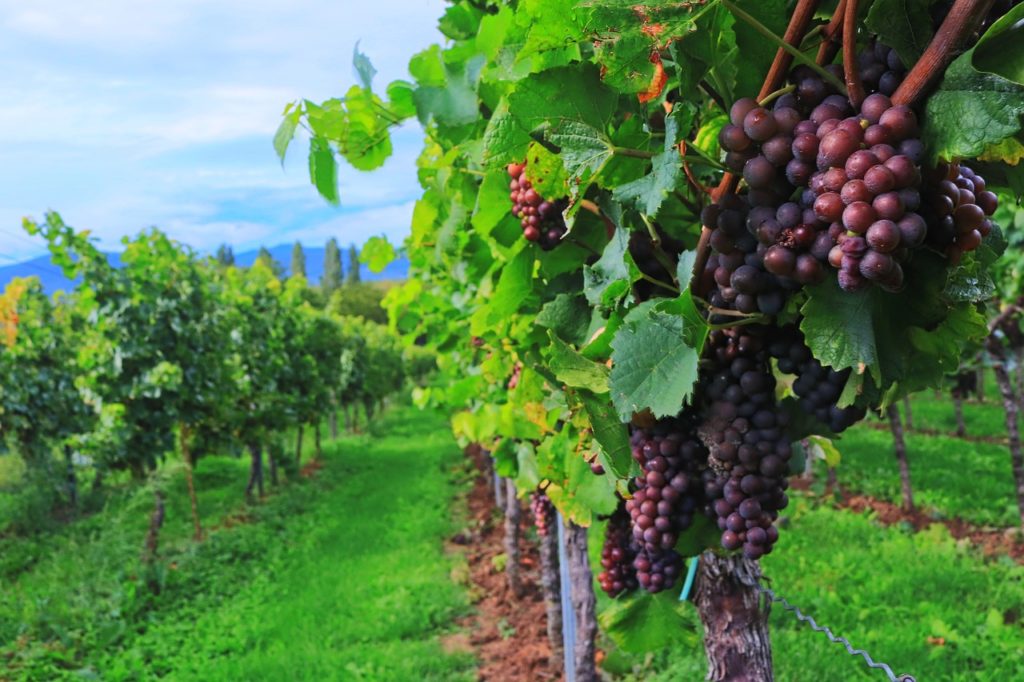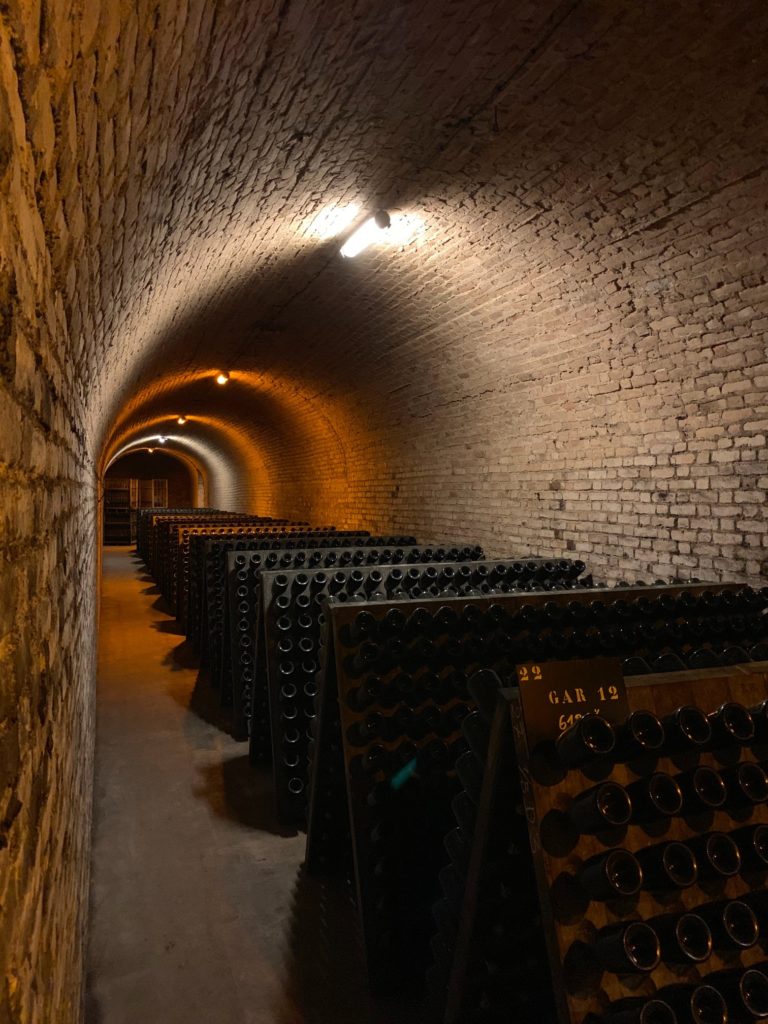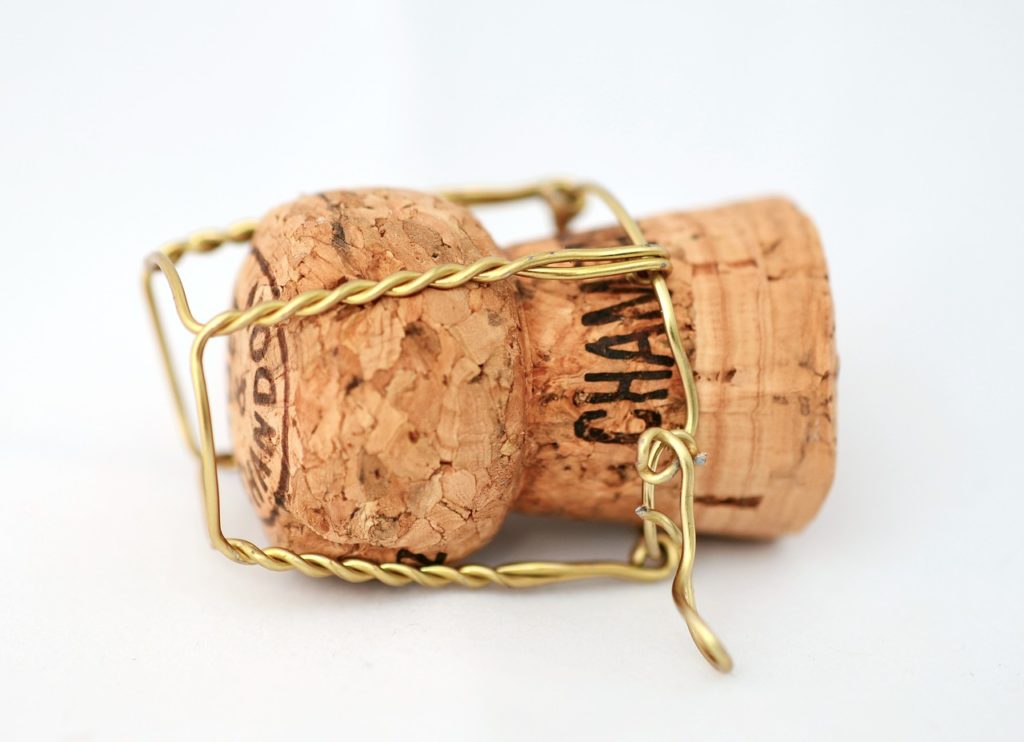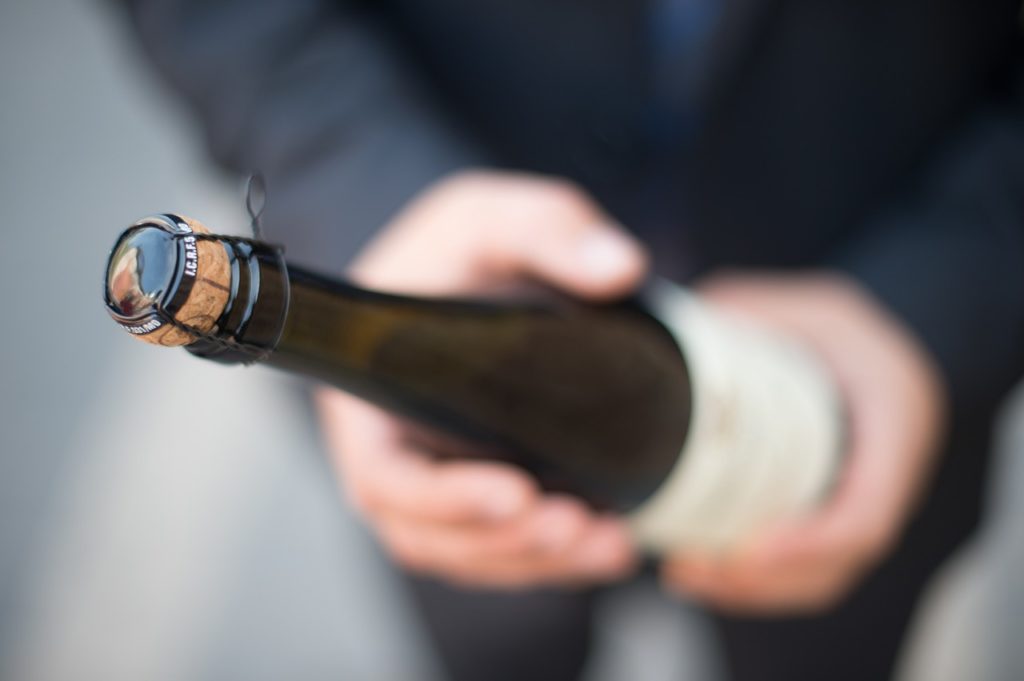By Abbey Thiel
What’s the trick to trapping those tiny bubbles in champagne anyways?
What’s the best part of the New Year? Well for me, it’s knowing that family and friends always have champagne on hand! I savor the cheers each time, and love hearing everyone’s hopes for the new year.
Turns out, this joyous feeling isn’t how people always felt about champagne!
Believe it or not, back in the 17th century sparkling wine was looked down upon. In fact, the French monk who is believed to have first discovered champagne, Dom Pierre Perignon, was actually charged with preventing the bubbles from forming in the first place [1].
At the time, the science of creating sparkling wine wasn’t entirely understood. This led to a dangerous mix of glass and corks flying around as wine bottles unexpectedly exploded, often spurring a chain reaction in storage cellars jam-packed with wine. In fact, this was so common that cellar workers regularly wore protective masks to defend themselves [2].
Nowadays, we have a much better handle on how to control those bubbles, but how do they even get trapped in the champagne in the first place?
Image by 123debbiei from Pixabay
The bubbles in champagne are really gaseous carbon dioxide, which is produced by yeast during a process known as fermentation.
Champagne is actually fermented two times. The first fermentation takes place in large, open vats. Think of those huge, stainless steel containers seen in breweries. The juice squeezed from grapes is pumped into these vessels, and yeast is added to metabolize the sugars into ethanol (alcohol) and CO2.
Since the vats are open, any CO2 produced during this fermentation is lost to the air. This might seem wasteful, but this step is used to increase the ethanol concentration to about 11% [2].
The trick to entrapping those bubbles actually lies in the second fermentation.

Image by Willi Stengel from Pixabay
To prepare for the second fermentation, the wine has additional yeast and sugar added. This mixture is bottled, corked, and stored in a cold cellar. This time, the CO2 created by the yeast is captured within the bottle and has no place to escape.
Since the cork is holding the entire bottle under pressure, the CO2 is predominantly in the liquid phase and dissolved within the wine. It will only turn into bubbles once the cork is popped and pressure released.
Unfortunately, we have a couple more issues that need to be taken care of before those bubbles can be enjoyed.
We now have that precious CO2 stuck in the champagne bottle. Sadly, we are left with a bunch of dead yeast cells in the wine too. Not only would this make the Champagne murky, it would also lead to an… interesting taste. Let’s just say that people usually don’t prefer the bready flavor of yeast in their wine.
Lucky for us, hundreds of years ago a process known as riddling or remuage was invented. Riddling involves storing the wine on specially designed racks, so that the yeast cells collect in the neck of the bottle. About twice a day, each bottle must be given a quarter of a turn [3]. This process is able to gather the cells into one mass.

The trick to getting the yeast cells out of the champagne bottle is called the disgorging process or dégorgement. Here the neck of the bottle is frozen so that an ice plug freezes with the yeast cells. Quickly, the cork is removed and the high pressure within the bottle sends the ice plug flying out!
Finally, we have freed the champagne from those nasty yeast cells, but it was at a cost. No matter how rapidly the cork is removed and put back on, some of the wine is lost when the ice plug is blasted out. To fill the bottle back up, a step known as dosage is employed.
During dosage, each Champagne house has a top-secret formula used to replace the liquid lost during dégorgement. This liquid is often a mixture of sugar and wines have been used for centuries and help distinguish between certain types of champagne [2].
The amount of sugar added at this time is what separates a brut, or very dry champagne, from doux, or sweet champagne. Dry in this case, really means a lack of sweetness or sugar.
From here, the bottles are capped with a wire cage to ensure the cork is held in place, given the correct label, and shipped off for everyone to enjoy!

Image by congerdesign from Pixabay
Considering the many hurdles in producing champagne, from explosive bottles to ejecting ice plugs, it’s pretty remarkable we have this bubbly drink! So, next time you are about to pop a bottle, impress all your family and friends with your new champagne knowledge. Cheers!
Sources
- “Climate-Smart Champagne.” Climate-Smart Food, by Dave Reay, Palgrave Macmillan, 2019, pp. 177–189.
- Liger-Belair, Gérard. “Effervescence in Champagne and Sparkling Wines: From Grape Harvest to Bubble Rise.” The European Physical Journal Special Topics 226.1 (2017): 3-116.
- “The Making of Champagne.” Uncorked: The Science of Champagne (Revised Edition). Princeton; Oxford: Princeton UP, 2013.

Abbey Thiel | Linkedin
Abbey discovered that food science was a real major while attending University of Wisconsin-Madison, and quickly transferred into the department. After graduating with a B.S. in food science, she decided to stay in Madison to pursue her PhD. Her research explores the fat network found within ice cream, and yes, there’s lots of ice cream parties! If not found sitting at a microscope for extended amounts of time, Abbey enjoys the great Midwestern sport of log rolling (Google it) and laughing really loud. She is also very busy passing on her passion for food science to her two-year-old niece, whose favorite color is bacon and has hopes of growing up to be soup.







Leave a Reply